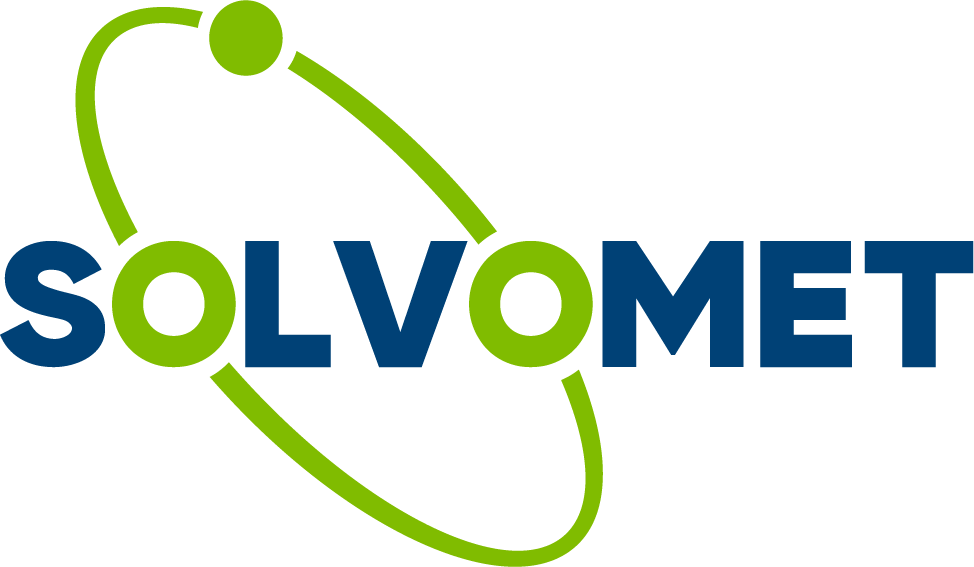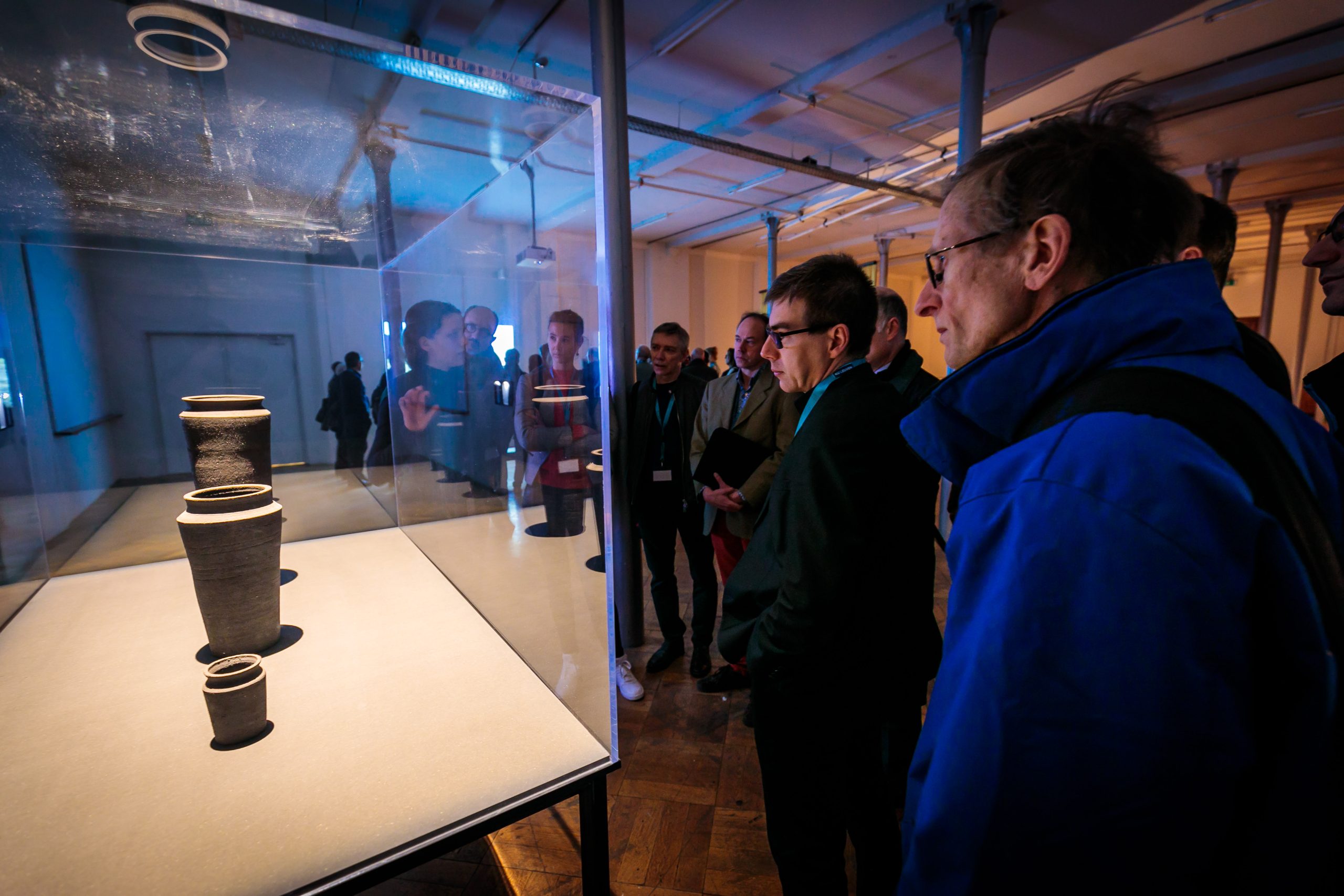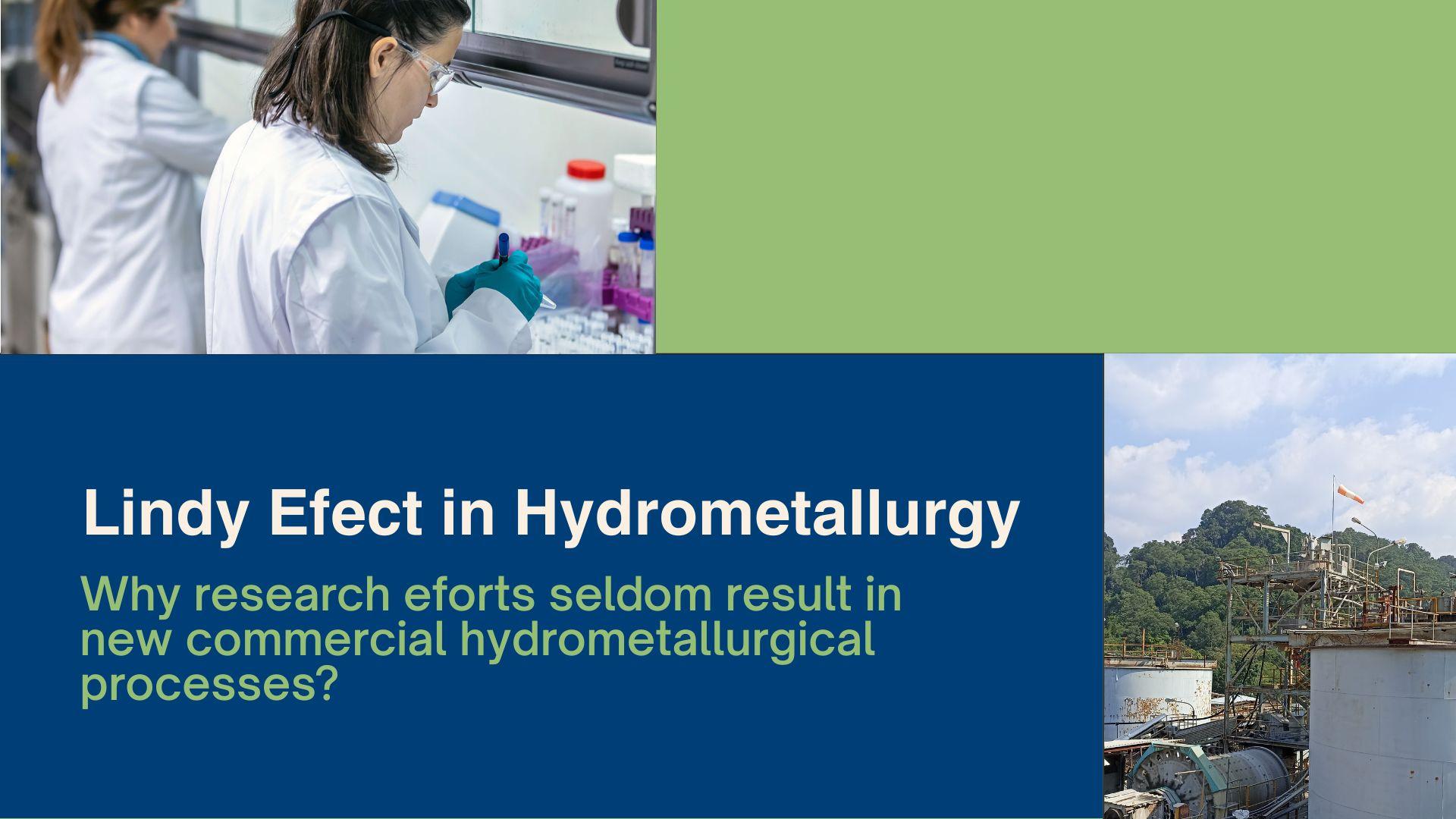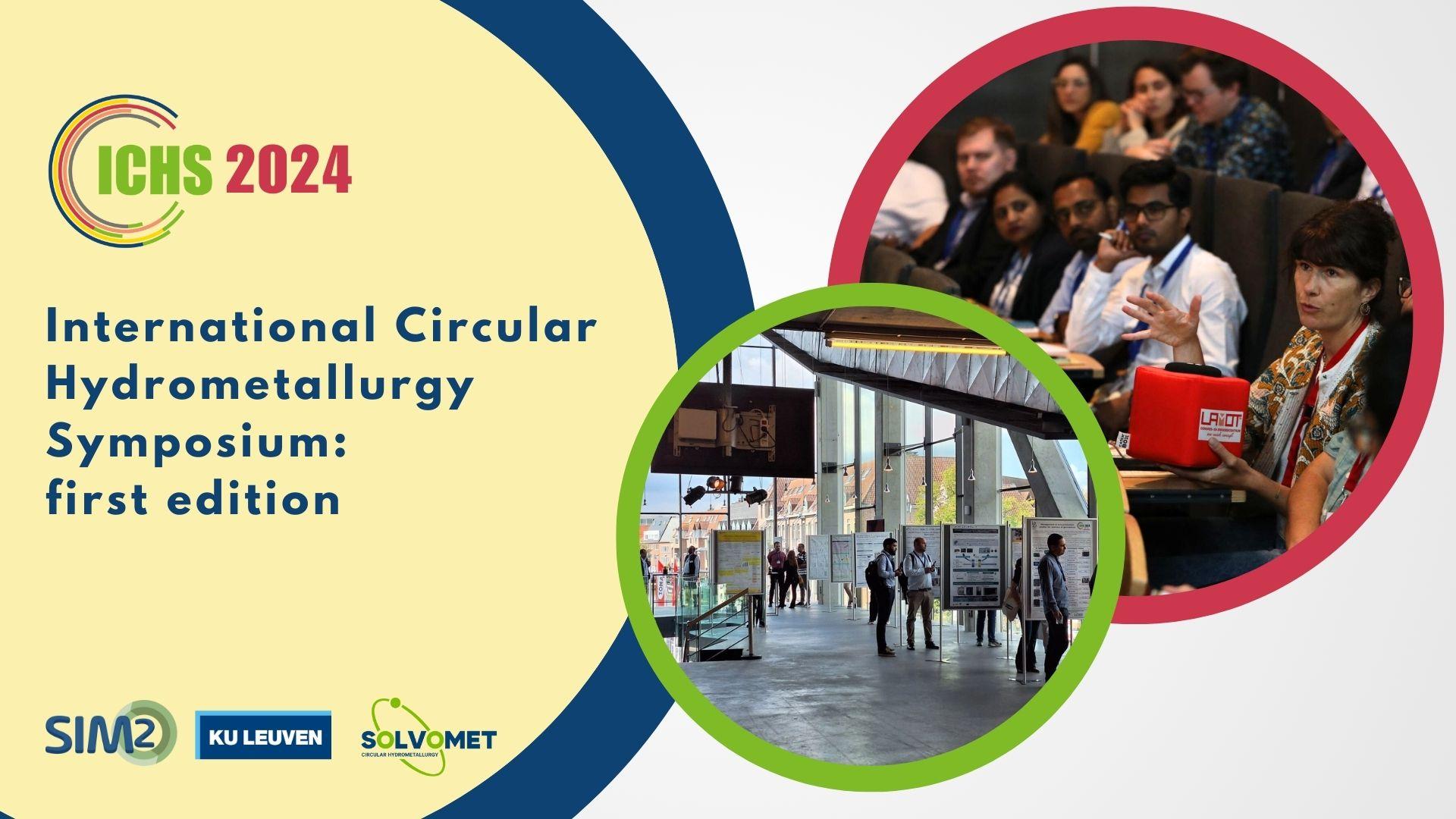 On 21 February 2018 the Symposium on ‘Transitioning to a low-carbon economy – the Social License to Operate for the mining and recycling of critical metals’ took place in Leuven, Belgium. The Symposium was part of the Artefact arts festival This Rare Earth – Stories from Below, the largest in its kind in Flanders. The event was attended by more than 170 people, with unusually diverse backgrounds, ranging from concerned citizens, to local and international ngo’s, public functionaries as well as raw material experts from industry and academia. The event included several keynote lectures, two panel debates and a speed trip to the Artefact rare-earth related Exhibition. The present article reflects upon the key discussions that took place and discusses “Five Lessons Learned” with respect to the Social License to Operate for the mining and recycling of critical metals, which are essential for the transition to a low-carbon economy (Credits image: Nicolas Herbots) (Leuven, PTJ/27-02-2018)
On 21 February 2018 the Symposium on ‘Transitioning to a low-carbon economy – the Social License to Operate for the mining and recycling of critical metals’ took place in Leuven, Belgium. The Symposium was part of the Artefact arts festival This Rare Earth – Stories from Below, the largest in its kind in Flanders. The event was attended by more than 170 people, with unusually diverse backgrounds, ranging from concerned citizens, to local and international ngo’s, public functionaries as well as raw material experts from industry and academia. The event included several keynote lectures, two panel debates and a speed trip to the Artefact rare-earth related Exhibition. The present article reflects upon the key discussions that took place and discusses “Five Lessons Learned” with respect to the Social License to Operate for the mining and recycling of critical metals, which are essential for the transition to a low-carbon economy (Credits image: Nicolas Herbots) (Leuven, PTJ/27-02-2018)
*

Credits image: Nicolas Herbots
The rationale for the Symposium

CRM List EC 2017 (credits image: redrawn by Paul McGuiness)
The sense of urgency with respect to the importance of the transition to a low-carbon economy has never been as outspoken as it is today. Taking into account the goal agreed during the UN climate conference in Paris (2015) – i.e. “[to keep the] global temperature rise this century well below 2 degrees Celsius above pre-industrial levels and to pursue efforts to limit the temperature increase even further to 1.5 degrees Celsius” – this transition cannot be postponed any longer. The required “deep decarbonisation” of our economy implies the rapid implementation of clean energy, efficient energy storage and clean mobility. All these clean technologies have in common that they require significant amounts of “critical metals”, i.e. metals with a high economic importance that simultaneously face a strong supply risk (see EC Critical Raw Material list, 2017; Binnemans & Jones, 2018). For instance, the permanent magnets for wind turbines or electric motors (for Hybrid and Electric Vehicles (HEVs) and e-bikes) require vast levels of rare earths (neodymium, dysprosium etc.). Likewise, energy storage systems, HEVs and e-bikes need ever increasing amounts of lithium and cobalt for the Li-ion NMC battery packs. Emission control systems in traditional cars, which still dominate the market today and the next decade, require Platinum Group Metals (PGMs) such as platinum, palladium and rhodium.
The question then is: how can we provide sufficient amounts of these critical metals and does their production entail environmental, health and safety risks? How are these burdens spread over the globe? Or can recycling avoid the need for primary mining of these metals? These questions formed the background for the Symposium on the Social License to Operate for the mining and recycling of critical metals (February 21, 2018).
- CRM recycling efficiencies are still very low
Urban mining and recycling of CRMs from End-of-Life (electrical) consumer goods (e.g. smart phones) and clean energy/mobility applications (e.g. HEVs, e-bikes, wind turbines etc.) is almost by default an environmentally-friendly method to generate an independent source of CRMs, which can offset the need for primary mining. In terms of CO2 footprint a general rule of thumb is that primary mining generates around 5-10 more carbon emissions than recycling, with the exact number being very metal-specific and dependent on the recycling process.

E. Lox (Umicore) (credits image: N. Herbots)
Unfortunately, as became very clear in the keynote lecture (download here) by Umicore’s Egbert Lox, anno 2018 recycling rates for most CRMs are still extremely low. This is not because the metallurgical recycling processes are inefficient, but rather because recycling requires a complex, multi-step value chain, involving collection, dismantling, shredding and final metallurgical recycling. If the collection efficiency is just 5% – as is the case for the current, global collection rate for mobile phones – then the overall recycling efficiency for metals like Co will also be extremely low, despite the fact that, for instance, Umicore’s Co metallurgical recycling efficiency exceeds 99%. The same is valid for the electric (neodymium-based) motors and (Li-ion) batteries from End-of-Life e-bikes, or the electric motors from HEVs. Hence, urban mining and recycling are no panacea.

S. Denayer (iCTV), P. Standaert (Ecowerf), K. Rycken (Leuven 2030), S. de Gheldere (FutureProofed) (credits image: N. Herbots)
In the first panel debate, Peter Standaert of the Flemish collection & recycling company Ecowerf rightfully pointed out the importance of developing sound policy instruments and sticking with clear choices, in order to provide a stable framework which allows to ramp up the collection efficiencies of End-of-Life goods. Katrien Ryckaert of the quadruple helix organisation Leuven 2030, which wants to transition the city of Leuven to a climate-neutral city by 2050, referred to the importance of inspiring story-telling in order to motivate larger fractions of the public to become more engaged in terms of more effective recycling and climate-friendly behaviour.
- Even 100% recycling of CRMs cannot avoid the need for (a lot of) primary mining
Taking into account that the deep decarbonisation of our economy requires such vast amounts of CRMs – neodymium, dysprosium, cobalt, lithium etc. – that even a purely hypothetical 100% End-of-Life recycling efficiency would not suffice. The amount of available CRMs in the present economy is simply way too low to provide this input. Secondly, as Electric Vehicles and wind turbines have typical lifetimes of 10 to even 20+ years, the contained CRMs only become available in a much later period. The schematic figure that tries to depict the circular economy cannot be simply a neat circle with no inputs nor outputs; in reality it needs to have a sigma-shape, as there needs to be a constant feed of new (primary) CRMs into the economy. This input is needed to (1) provide the relevant amounts of CRMs for the new low-carbon technologies and to, concurrently, (2) balance the lag time for End-of-Life goods to become available for recycling, while also (3) compensating for inevitable losses during the complex recycling value chain (cf. 2nd Law of Thermodynamics).
Egbert Lox (Umicore) illustrated this for platina-group metals (PGMs) and cobalt (Co). As regards PGMs, Lox pointed out that, at present, 30% of the PGMs that are needed for new automotive catalysts, is sourced through recycling. In the best possible scenario this share can be increased to 60-70% in the next decades, which still leaves 30-40% of future PGMs to be provided by primary mining.

(Credits image: Umicore)
For cobalt, which is now often nicknamed as “the new gold”, the situation is quite similar. The growth rates for the Li-ion NMC rechargeable battery market are astronomical. The main growth driver is and will remain the rapid electrification of mobility. However, the present amounts of cobalt in the economy are still very low, while the End-of-Life collection rate for (small) Li-ion batteries for mobile phones is lower than 5%. Hence, recycling currently plays only a minor role in the provision of cobalt. Today, more than 65% of annual cobalt production occurs in Congo, of which 20% happens via artisanal, small-scale mining. In the future, the recycling value chain for cobalt will need to be set up, but this will take time, once more implying that cobalt recycling cannot substitute primary mining of cobalt.
The intermediate conclusion is that, provided we believe the transition to a low-carbon economy needs to take place, there is a clear, societal need for the mining of a number of critical raw materials, such as the rare earths neodymium and dysprosium, as well as lithium and cobalt. This brings us to the question where and how this primary mining needs to take place.
- Western hypocrisy and NIMBY-ism prevails
At present most of these materials are sourced from non-European mines, such as China (rare earths in particular) and Congo (cobalt in particular). European mines for CRMs exist but are currently hardly exploited. A good example is the Norra Karr rare-earth mine in the South of Sweden. This eudialyte mine would be able to provide enough critical rare earths for the entire EU industry for at least 50 years (Binnemans & Jones, 2018). The company Tasman Metals has already invested more than 15 years in the exploration and technology development for this rare-earth mine. It received a mining license from the Swedish state and was getting ready for the commercialisation of the mine. However, due to strong local resistance against the mine project, the Swedish state recently revoked the mining license. At present it seems extremely unlikely that this mine will start producing rare earths. The result is that Europe will remain almost 100% dependent on Chinese imports for rare earths. This example illustrates that mining projects in Europe face major issues to get accepted by local communities, even in countries like Sweden which have a rich mining history.
A similar example is the Closing-the-Circle Enhanced Landfill Mining (ELFM) project at the Remo landfill site in Houthalen-Helchteren, where the Belgian company Group Machiels wants to initiate the first ever, resource recovery-driven ELFM project in the world. The goal is to convert a 16 million tonne landfill site into a nature zone, while recovering materials (base metals, glass, aggregates, low-carbon binders etc.) and energy carriers (hydrogen, i.e. through plasma gasification of the Refuse Derived Fraction and the subsequent processing of the syngas). After 10 years of research, development and engineering – together with a large group of stakeholders (cf. ELFM IV: Six Lessons Learned) – the company is ready to start its activities and demonstrate the potential of ELFM. However, also in this case, local protests by a small minority have resulted in a multitude of legal procedures. The de facto result of this NIMBY-ism is that the project faces serious delays, with uncertainty concerning its eventual implementation.

From left to right: M. Meesters (Wageningen U.), K. Komnitsas (METGROW+), K. Van Acker (KU Leuven), E. Lox (Umicore), L. Rijnhout (Friends of the Earth Europe) (credits image: N. Herbots)
These two examples point to a certain level of hypocrisy. On the one hand European citizens want to enjoy the luxury of hi-tech electronics (e.g. smart phones) and a multitude of cleantech products (electric bikes and cars, solar panels, clean energy); on the other hand they don’t want this production to occur in “their” backyard. The consequence of not mining Europe’s own CRM ore deposits – through a form a “responsible mining”, dixit Karel Van Acker (KU Leuven) – is that these CRMs need to be imported from non-EU mines. These kind of mines are typically located in resource-rich countries like China and Congo, where the environmental and health standards are typically not (yet?) as stringent as they would be in Europe. Furthermore, the mining of these metals in such countries does not always happen in the best social and/or human rights circumstances. Mining conflicts in China, Congo or elsewhere are widespread. Nevertheless, many Western people turn a blind eye to this reality, as long as they have cheap access to consumer goods, clean energy and mobility. The parallel with the transfer of CO2 emissions to the global South, associated with the production of commodities in the South, which are subsequently consumed in the global North (and which don’t appear in the national CO2 emission accounting system any more), is quite obvious.
- The Social License to Operate concept itself still needs to gain credibility
In the previous paragraph we already showed that in the EU-28 “primary mining does not have sex appeal”, as suggested by Marcin Sadowski of the EC (EASME). Sadowski showed a number of public opinion polls of how EU citizens perceive different industry sectors. In these EU rankings the mining industry appears in the “relegation zone” of the trust-and-credibility-league. This is a genuine issue not only for the European but also for the global mining industry.

M. Meesters (Wageningen U.), K. Komnitsas (METGROW+), K. Van Acker (KU Leuven & EIT RawMaterials) (credits image: N. Herbots)
In order to overcome this lack of trust the sectors needs to do radically invest in developing environmentally-friendly exploration and metallurgical extraction technologies, with a lower carbon, water and chemical footprint. The need for such radical innovation was stressed by a number of panel members, including Kostas Komnitsas (Technical University of Crete, EU METGROW+) and Bart Blanpain (KU Leuven). Several on-going EU Horizon 2020 projects, like METGROW+, SOCRATES, NEW-MINE, NEMO and CROCODILE are doing precisely that. The goal is indeed to develop genuinely “responsible mining”.
Concurrently, the mining sector needs to work hard to obtain and maintain the so-called Social License to Operate (SLO). The SLO has been defined as the “grant of permission to undertake a trade or carry out a business activity” (Nielsen, 2013). The concept refers to the level of acceptance that mining companies receive from public bodies, local communities and broader society. This popularity of the SLO concept follows broader trends in society towards stakeholder and community involvement (Meesters and Behagel, 2017).
However, what became apparent during the closing debate of the Artefact Symposium is that international civil society groups do not fully endorse the SLO concept (yet). In her keynote lecture (download here) Leida Rijnhout (Friends of the Earth Europe) referred to the SLO as an “empty container concept, which is too voluntaristic and is prone to greenwashing activities by international mining co-operations”. She asked the question of what “acceptance” really means, particularly in countries where democratic structures are not in place. Likewise, Marieke Meesters (Wageningen University) also denoted the SLO concept, describing it as “too ambiguous”. She stated the fact that ”its translation ‘in the field’ remains problematic”.

L. Rijnhout (Friends of the Earth Europe) (credits image: N. Herbots)
Nevertheless, one could also look at the (“soft-law”) SLO concept on a more metaphorical level. Clearly, the SLO cannot and should not be benchmarked with the official (“hard-law”) legal mining license a company needs to obtain before starting its activities. Indeed, in the global South, where “the poor sell cheap” (dixit Leida Rijnhout), asymmetric power relations and the lack of democratic structures may erode the actual value of the SLO. In contrast, in the Western context democratic structures are in place and civil society is highly organised. In fact, I would argue that the SLO-concept may be more relevant in an EU mining context.
For instance, the obstruction of both the Norra Karr REE mining project and the Remo Houthalen-Helchteren ELFM case is directly linked to the absence of a fully-convincing SLO. In order to obtain (and subsequently maintain) such a metaphorical SLO for mining projects in the West, the involved companies need to engage with all stakeholders in an open, transparent and continuous dialogue. Group Machiels’ Closing-the-Circle project is an excellent example. Since 2010 the company has been working hard to establish such a multi-actor dialogue with the involved stakeholders, including the so-called “locals” of the Remo landfill site. The questions and remarks of these locals have strongly influenced the technical and non-technical research questions that have been addressed (e.g. initiation of monitoring system at the Remo site). As a result of this 8-year collaboration, the trust of the local communities has steadily grown, as also reflected in their recent contribution at the ELFM IV Symposium in Mechelen, Belgium (February, 2018, download here). However, despite this growing trust and the success of this citizen science aspect, the Remo project has still suffered a major legal setback. This is due to the actions of a tiny group of people who continue to resist the project. This shows the limitations of the legal democratic process in Europe, where even one individual can block a social and environmentally-beneficial project. How will the SLO concept deal with this kind of situation? Food for thought!
- The European Commission endorses the SLO concept
On a positive note we can see that at least the European Commission, along with the European Innovation Partnership on Raw Materials, has fully endorsed the SLO concept. This becomes evident in the Horizon 2020 calls for projects that need to develop eco-friendly metallurgical systems for the production, recovery or recycling of CRMs. Nowadays, such calls explicitly force consortia to integrate a clear strategy on how civil society will be engaged in order to build trust in the mining and recycling sector in Europe.

M. Sadowski (EC, EASMA) (credits image: N. Herbots)
Marcin Sadowski provided a clear overview of how much funds the EC has been spending on the issue. Likewise, the EC is taking initiatives to discuss the SLO concept during tailored EC-driven workshops (e.g. June 5, 2018: Workshop on Social Acceptance in the European Raw Materials Sector). Furthermore, both the NEMO and CROCODILE EU Horizon 2020 projects, which are set to start in June 2018, will spend ample efforts on a multi-actor, transition management framework (for respectively the reprocessing of sulfidic mining waste and setting up of an EU cobalt value chain). The methodology will combine both a bottom-up and top-down civil society engagement strategy. Locals groups will be set up at several mining sites in Europe. During the course of the projects the SLO concept can be further refined and made more practical from a European mining perspective. This will be the only way to overcome the NIMBY syndrome.
References
- Binnemans, K., Jones, P.T., Kritieke metalen voor de transitie naar een koolstofarme economie, Lessen XXI Eeuw, 2018, UP Leuven. Download paper here
- Meesters, M.E., Behagel, J.H., The Social Licence to Operate: Ambiguities and the neutralization of harm in Mongolia, Resources Policy, 53 (2017) 274–282.
- Nielsen, A.E., License to operate. In: Idowu, S.O., Capaldi, N., Liangrong, Z., Das Gupta, A. (Eds.), Encyclopedia of Corporate Social Responsibility. Springer, Berlin, (2013) 1585–1591.
Want to react? Please do so by sending your comments to peter.jones@kuleuven.be.
*Disclaimer: the views expressed in this article are the private views of the author and may not, under any circumstances, be interpreted as stating an official position of any of the organisers of the Artefact Symposium: Stuk, SIM² KU Leuven, KU Leuven Dienst Cultuur, EIT Raw Materials, i-Cleantech Vlaanderen, EU METGROW+ , Leuven 2030, Province of Flemish Brabant.
About the author. Dr. Peter Tom Jones is a KU Leuven IOF (Industrial Research Fund) Senior Research Manager in the field of Urban/Landfill Mining and Sustainable Metallurgy. He is coordinator and/or valorisation officer of a number of KU Leuven, Flemish and EU-wide projects and consortia in the field of recycling, metallurgy and Urban/Landfill Mining. He coordinates the interdisciplinary research cluster SIM² KU Leuven, which is on of the core drivers for KU Leuven’s participation in the EIT RawMaterials. He is the author of numerous papers and books in the field of transition management, climate change policies, recycling, metallurgy and Urban/Landfill mining. Since January 2012 he is the President of i-Cleantech Flanders. In March 2014 he was elected to become the General Coordinator for the European Enhanced Landfill Mining Consortium (EURELCO). Jones also coordinates the EU H2020 MSCA-ETN NEW-MINE project on ELFM and will explore the Social License to Operate framework in the new EU H2020 NEMO and CROCODILE projects.

Peter Tom Jones (SIM² KU Leuven) (credits image: Nicolas Herbots)
Key videos & documents Artefact Symposium (February 21, 2018)
- Artefact Symposium testimonial video, which integrates a large number of testimonials and diverse perspectives from the European Commission, academia, industry and civil society: view here
- All Presentations and > 100 photographs (credits: Nicolas Herbots) can be downloaded through the Artefact Symposium event page.
- Opening speech Tie Roefs (Deputy Environment, Province of Flemish Brabant) Download speech here
- Article Koen Binnemans & Peter Tom Jones, Kritieke metalen voor de transitie naar een koolstofarme economie, Lessen XXI Eeuw, 2018, UP Leuven. (Download paper here)

Artefact Exhibition & Speed trip (credits image: Nicolas Herbots)

